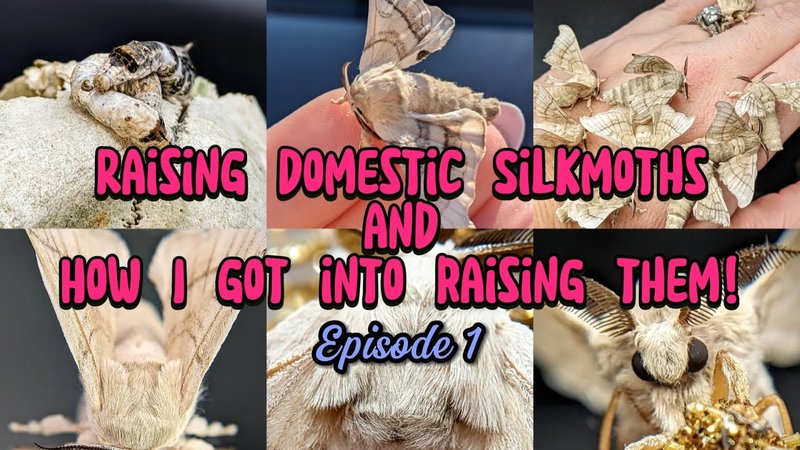
If you’re wondering where to start, you’re in luck. With the right setup, a bit of knowledge, and a dash of patience, you can raise hornworms successfully. Supplies are minimal, and they’re surprisingly low-maintenance. You can typically find hornworm kits available online or at gardening stores, or you can catch them in the wild if you’re feeling adventurous. Let’s dive into how to raise hornworms for your next science project!
Understanding Hornworms
To get started, it’s good to understand what hornworms are. These caterpillars are known for their distinctive look—long, green bodies with a horn-like structure at the rear. They primarily feed on plant leaves, particularly tomatoes, tobacco, and peppers. But don’t worry, you don’t have to own a garden full of these plants to raise hornworms!
Their life cycle has four stages: egg, larva (hornworm), pupa, and adult moth. This offers a wonderful opportunity to observe different developmental stages right before your eyes. As they grow, they can change significantly, and you’ll get to see firsthand how they transform. This is the perfect example of metamorphosis, making it an engaging topic for your science project.
Setting Up Your Hornworm Habitat
Creating a comfortable habitat for your hornworms is essential. Here’s how you can set it up:
- Container: A simple plastic container with a lid works well. Make sure it’s not too big or too small—about 2 to 3 gallons will do.
- Ventilation: Your container needs holes for air. You can poke small holes in the lid or use a breathable mesh.
- Substrate: Line the bottom with a soft paper towel or absorbent material to help with cleaning. This keeps things tidy and helps absorb moisture.
- Temperature: Hornworms thrive in warm conditions, ideally between 70-85°F. A simple heat mat can keep them cozy.
Remember to place the container somewhere warm and safe from direct sunlight. This will keep your little friends happy and healthy!
Feeding Your Hornworms
Hornworms are voracious eaters, and feeding them is one of the most enjoyable parts of raising them. You can buy commercial hornworm food or simply use fresh leaves from their favorite plants. Here’s how to properly feed them:
– Freshness: Always provide fresh leaves. Remove any wilted or old leaves to avoid mold.
– Quantity: Start with a handful of leaves if you have just a few hornworms. As they grow, they’ll need more food.
– Frequency: Check on them daily. Hornworms can eat a lot, so refill their food every couple of days.
You might find it fascinating how quickly they grow when they’re well-fed! They’ll often double in size in just a few days.
Monitoring Growth and Health
As you raise your hornworms, keep an eye on their growth and health. Here are some tips:
– Color and Size: Healthy hornworms are bright green and plump. If they start to look dull or shriveled, something might be wrong.
– Behavior: They should be active and crawl around. Lethargy can signal trouble; they might be too cold or stressed.
– Lifespan: Typically, hornworms will grow for about 2-3 weeks before they enter the pupal stage.
Tracking their growth can offer insights into their life cycle. You might even consider keeping a journal or taking pictures to document their changes!
Transforming into Moths
One of the most exciting parts of raising hornworms is watching them transform into moths. Once they reach their full size, they’ll begin to search for a quiet place to pupate. Here’s what you can expect:
– Pupation: They usually turn brown and bury themselves in the substrate. Ensure your setup has enough material for them to dig.
– Cocooning: They’ll form a hard outer shell, which protects them during the pupal stage. This can take about 2 weeks, depending on temperature.
– Emergence: Soon enough, you’ll see adult moths emerge. They typically have large, beautiful wings with patterned markings.
This stage in their life cycle can be a delightful surprise!
Presenting Your Science Project
Now that you’ve raised your hornworms and watched their incredible transformations, it’s time to present your findings. Here are some tips for showcasing your project effectively:
– Visuals: Create a timeline of their growth stages with pictures. This visual aid helps explain the process clearly.
– Description: Write about your experience in detail, from setting up their habitat to their transformation. Use simple language to make it engaging.
– Interactive Element: If possible, consider having a small hornworm or two on display (in a secure container) for your audience to see!
This mixture of visual aids and live examples makes for an engaging presentation.
Troubleshooting Common Issues
While raising hornworms is generally straightforward, you might run into a few common issues. Here’s how to troubleshoot:
- Mold Growth: If you notice mold in the habitat, remove any old food and clean the container.
- Overcrowding: Too many hornworms in one area can lead to competition for food. Consider transferring some to another container.
- Temperature Issues: If they seem sluggish, check the temperature. Adjust accordingly to keep them warm.
Taking proactive measures will ensure your hornworms stay healthy throughout their lifecycle.
In summary, raising hornworms for science projects can be an exciting and educational journey. You’ll learn about biology, the life cycle of a moth, and responsibility, all while having fun! So grab your supplies and get started—you might just become a little captivated by these curious creatures.

